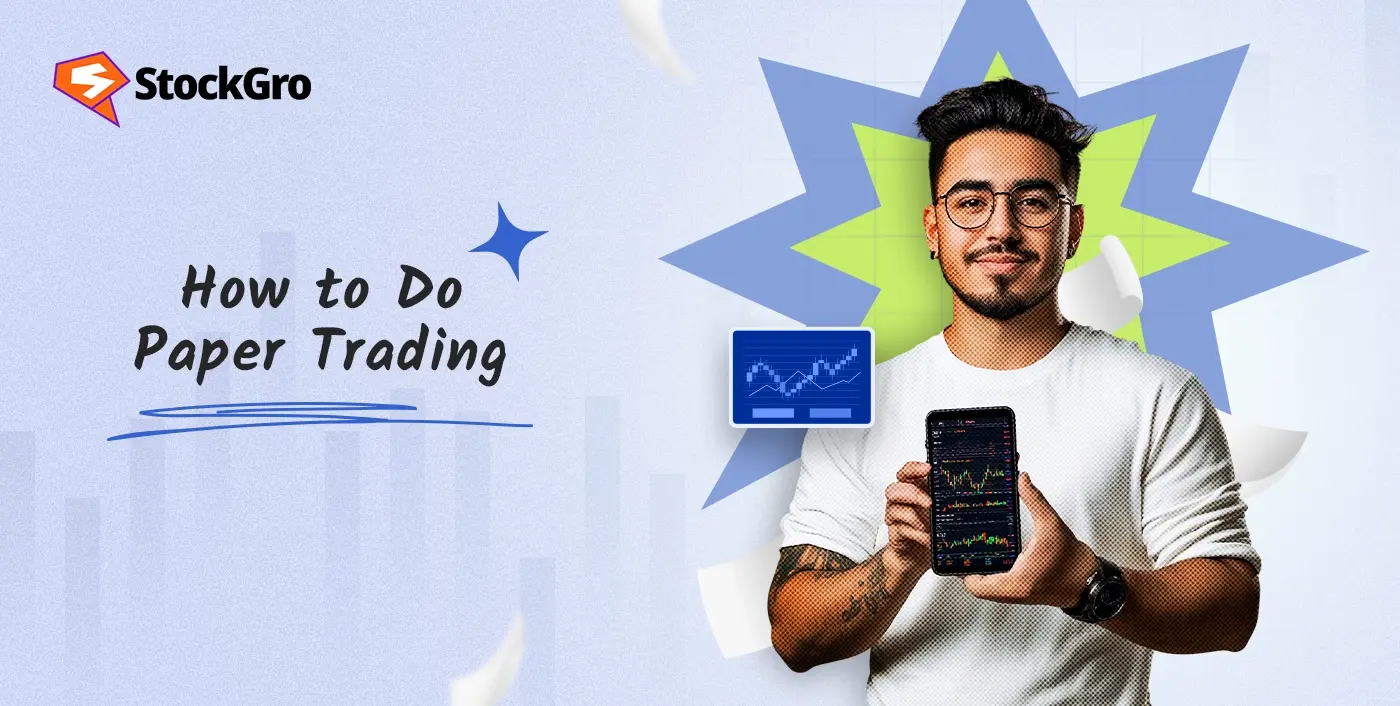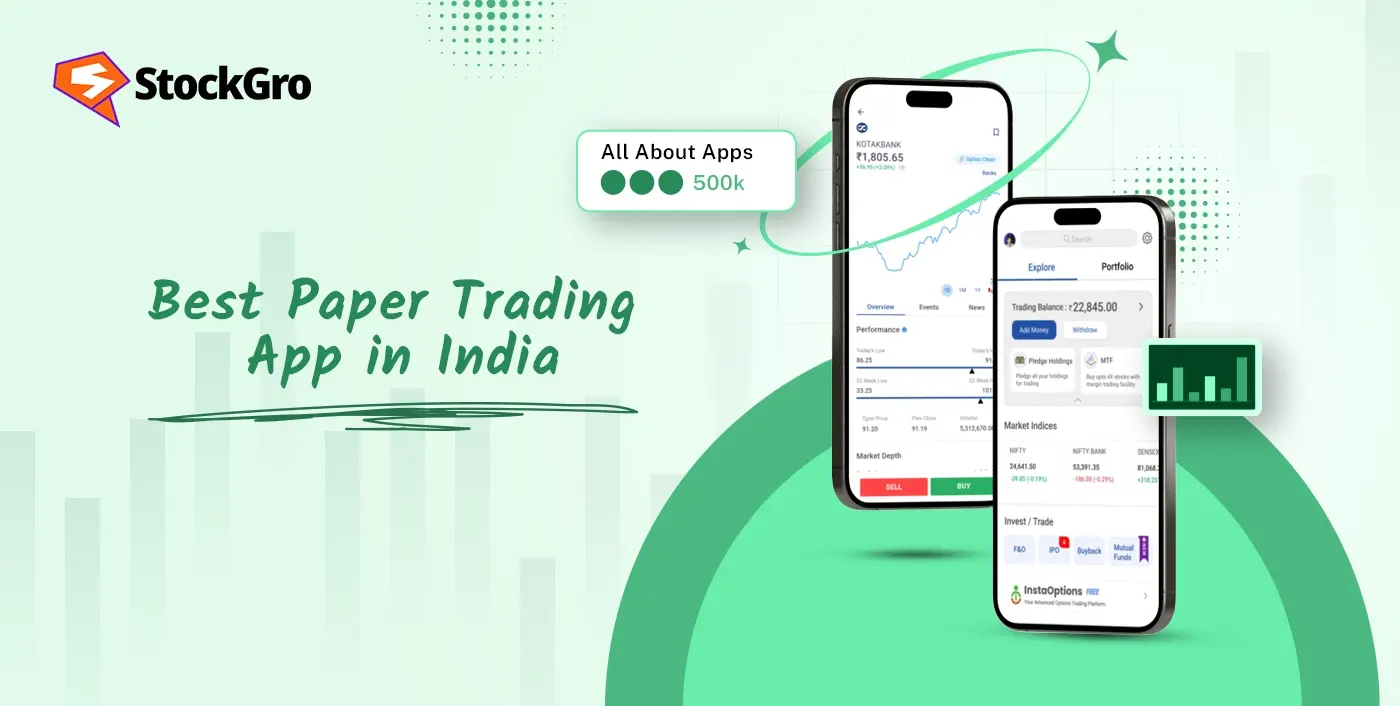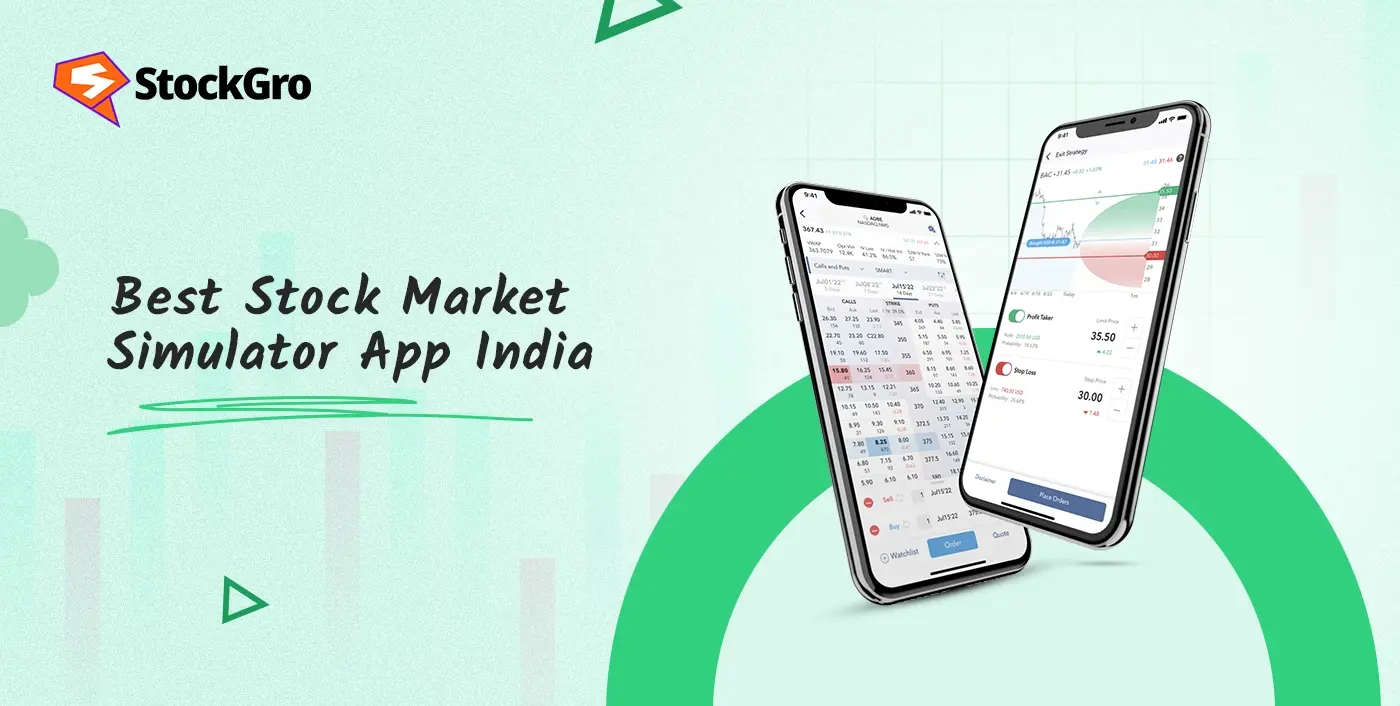
If you have ever looked at the stock market and thought, “Looks fun… but what if I lose my savings?”, you are not alone. That fear is almost a rite of passage.
Whether you’re a college student juggling assignments or someone working your first job, the thought of losing hard-earned money to a bad trade can be intimidating. You have probably heard stories of people making thousands in a day and others losing it just as quickly.
When you are starting out, you are not just worried about making money; you are concerned about not losing what you already have. That’s why jumping straight into live trading can feel like being asked to swim in the deep end when you’ve never touched water before.
That’s where paper trading comes in. Think of it as the practice nets in cricket: same ball, same bat, same field… but without the pressure of a live scoreboard. You can miss, experiment, and try odd shots; no harm done.
What is Paper Trading?
Simply put, paper trading is the activity of trading stocks using virtual currency. The market data is real, the prices are real, and the buying/selling process is also real, except you are not touching your actual bank account.
In the old days, traders would literally jot down imaginary trades in a notebook to see how they might have worked out. That’s why it’s called “paper” trading. Now, we have apps that make the whole thing feel like you’re really trading, but with virtual funds.
It’s the safest way to get hands-on experience without worrying about losing a single rupee.
Why Should You Try Paper Trading?
There are plenty of reasons, but let’s talk about the most important ones, the ones that will actually make a difference when you go live.
- Mistakes Without Consequences: In your first few weeks, you will make mistakes: chasing stocks after they have already jumped, selling too soon, ignoring stop-losses. In live trading, each of those errors has a price tag. In paper trading, they cost you nothing but a bit of pride.
- Discovering Your Style: Markets offer different “personalities”: intraday trading for quick movers, swing trading for the patient-but-active, and long-term investing for slow builders. Paper trading lets you try all of them to see which fits your personality and schedule.
- Building Confidence: The first time you click “Buy” in a live account, your hands might actually sweat. You double-check everything, the order type, the price, the quantity, before hovering nervously over the button. After a few dozen paper trades, the process becomes second nature.
- Understanding Market Behaviour: The stock market isn’t random noise; it has patterns, moods, and reactions. You’ll see how prices respond to news, how they move differently in the morning compared to the afternoon, and how certain stocks have their own rhythm.
- Emotional Discipline: Even with fake money, you’ll feel small flashes of greed and fear when prices swing. This is the perfect time to train yourself to stick to rules instead of reacting impulsively.
How to Do Paper Trading (Step-by-Step)
Okay, let’s simplify it into smaller, more manageable steps.
Step 1: Choose a Paper Trading Platform
The most important thing is to find a place to practise. In India, some popular options are TradingView, Moneybhai (by Moneycontrol), StockGro, and NSE Paathshala.
Each one has its own vibe. TradingView is great if you love charts. Moneybhai feels a bit like a game with leaderboards. StockGro has contests. NSE Paathshala is official and suitable for serious practice. Pick what feels comfortable to you.
Step 2: Create a Free Demo Account
No complicated forms here. Most platforms just need your email or mobile number. Since it’s fake money, there’s no KYC process. You’ll be inside your account in minutes.
Step 3: Set Up Virtual Funds
You will typically notice a large balance: ₹10 lakh or more, as soon as you log in. That’s your “practice capital.”
Here’s a tip: don’t blow it all on random trades just because it’s fake money. Treat it like it’s your real savings. That way, you will build the discipline you actually need later.
Step 4: Place Your First Trade
Pick a stock you recognise, maybe Tata Motors, HDFC Bank, or a company you personally like. Decide how many shares you want, click “Buy,” and watch it appear in your portfolio.
This is where the excitement kicks in. Prices move, your profit/loss changes, and you start feeling like a real trader.
Step 5: Track Your Performance
The secret to improving isn’t just placing trades. It’s reviewing them. At the end of each day, check your portfolio. Take note of the success or failure of each trade. Consider other courses of action.
Do this regularly, and you will see your decision-making improve faster than you expect.
Best Paper Trading Platforms to Get Started
Here’s a quick breakdown of some solid options if you’re looking for the best paper trading platform for your style:
- TradingView: Best for chart lovers and technical analysis fans.
- Moneybhai: Perfect for beginners who like a fun, gamified style.
- StockGro: Great for contests and learning from others.
- NSE Paathshala: Serious and realistic, suitable for students and aspiring traders.
Benefits of Paper Trading
The biggest one? No risk. You can make mistakes and learn from them without losing a rupee.
It also teaches you how the market moves in real time. You will get used to seeing prices jump up and down and learn to stay calm. This is a big deal because emotions can make or break a trader.
And here’s the thing: paper trading helps you test different strategies. You can try short-term trades like intraday trading, longer approaches like swing trading, or even high-risk moves to see what suits you best.
Tips for Successful Paper Trading
- Treat it seriously. Act like your actual bank account is getting affected.
- Don’t overtrade. You shouldn’t feel obligated to purchase anything simply because it’s free.
- Write stuff down. Keep a small notebook or Google Sheet for your trades.
- Try different styles. Day trading, swing trading, long-term investing. Experiment with your trading style.
This is an opportunity for you to test out different approaches risk-free.
When Should You Switch to Real Trading?
Paper trading is great, but you can’t stay in practice mode forever. A good rule is to move to real trading when you’ve been consistently profitable for at least 3–6 months in paper mode.
You should also know basic risk management: things like setting a stop-loss and deciding how much to invest per trade. Most importantly, be mentally ready to see losses without panicking.
Common Mistakes to Avoid in Paper Trading
A big one is overconfidence. Just because you’re making money in paper trading doesn’t mean it will happen instantly with real money. The emotions hit differently when your own cash is on the line.
Another mistake is treating it like a game. If you’re buying random stocks without any thought, you are not really learning. Also, don’t forget to review your trades; that’s where the improvement happens.
Final Thoughts
If you are curious about trading but afraid to lose money, paper trading is your safety net. It’s free, it’s realistic, and it gives you an experience that no book or video can match.
The market rewards preparation. The more you practise placing trades, managing positions, and sticking to plans, the smoother your transition to live trading will be.
Start now. Pick a platform, set up your account, and place your first planned trade. Track your progress for a few months, make adjustments, and build confidence.
When you finally go live, you won’t be guessing. You will be executing a process you have already tested, and that’s a massive advantage in a game where most beginners jump in unprepared.
FAQs
Most platforms give you a big virtual balance, often ₹10 lakh or more. This is not real money. It is just for practice. You can use it to buy and sell as if you’re trading for real.
Yes, in most cases. Apps and websites offer paper trading without charging anything. You just sign up and start practising. Since it’s virtual money, there are no real deposits, no fees, and no risk of losing your savings.
It is very close to real trading. Prices and charts come from the live market. You can place orders like you would in real life. The only difference is that there’s no real money or emotions involved.
Many traders practise for 3 to 6 months before using real money. The goal is to be consistent and confident. If you can make steady profits in paper trading, you’re probably ready to start small in real trading.
Yes, you can. Many platforms let you practise with cryptocurrencies like Bitcoin or with forex pairs like USD/INR. The process is the same: you trade with virtual money but use live market data to learn.

